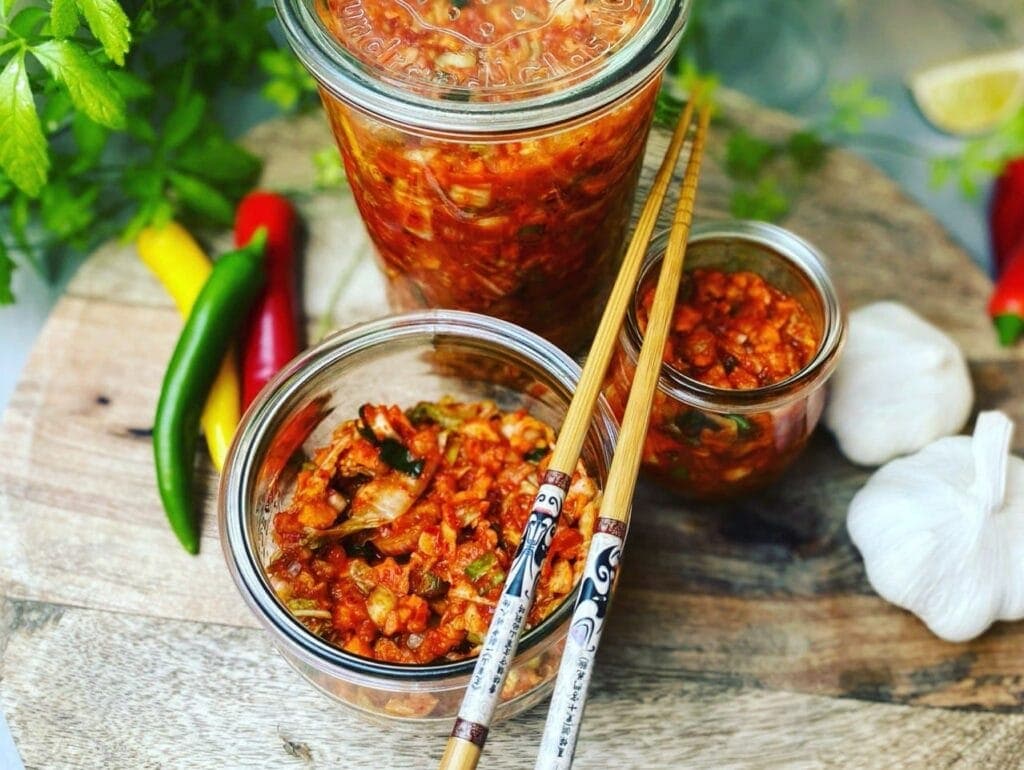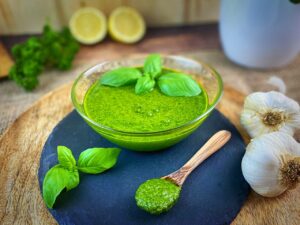Kimchi means “fermented vegetable” and is a very powerful probiotic food. The healthy cabbage originates from Korea and is traditionally preserved like sauerkraut as a vitamin source for the winter. The preperation is similar to sauerkraut, but the cabbage and the rest of the ingredients are not cooked in the Korean kitchen classic. In Korea, kimchi is served as a side dish with many meals.
Vital minerals, vitamins, probiotics and enzymes are preserved during fermentation and the naturally produced lactic acid bacteria have a positive effect on the gut flora. Kimchi not only improves your digestion and metabolism, but also activates your immune system. In addition, the high content of antioxidants has an anti-inflammatory effect.
Every family in Korea has its very own recipe. This recipe is just one variation of how you can make it. There are no limits to your creativity in the preparation.
However, with this traditional kimchi recipe, you can easily make it in no time.
Ingredients for Kimchi
- 800 g Chinese cabbage
- 1 daikon (white radish)
- 1 carrot
- 5 spring onions
- 2 cloves of garlic
- 1 thumb-sized piece of ginger
- 4 tablespoons soy sauce
- 2 tablespoons brown rice flour
- 20-40 g chilli flakes (Gochugaru)
- 10×20 cm piece Kombu
- 1 apple
- 40 g sea salt
Preparation of the Kimchi
Step 1
Cut the Chinese cabbage into bite-sized pieces and wash well. Then mix in a bowl with 40 g sea salt and let it rest for at least 1 hour.
Step 2
Wash the Chinese cabbage well under running water again several times and drain. The sea salt should be washed out of the cabbage so that the kimchi is not over-salted.
Step 3
For the marinade, combine 250 ml water and kombu in a small pot and let it cook at a low temperature for about 10 minutes. Then remove the seaweed and stir in the brown rice flour, remove from heat after boiling again.
Step 4
Put the chilli flakes, apple, garlic, ginger and soy sauce in a blender with the cooked brown rice flour and blend well.
Step 5
Chop the radish, spring onion and carrots into bite-sized pieces and mix well in a bowl with the Chinese cabbage and marinade.
Step 6
Pour the kimchi into clean canning jars and press the vegetables down well. There must be sufficient liquid in the container. The kimchi needs at least 2 days to ferment. It is best to put a plate under your canning jars, as liquid can leak out of the lid. It can be stored in the refrigerator for up to 3 months.
Tip:
You can make kimchi with all kinds of vegetables and conjure up your very own creation.







